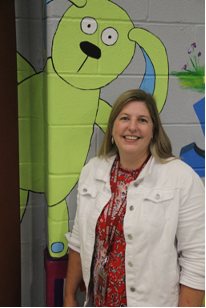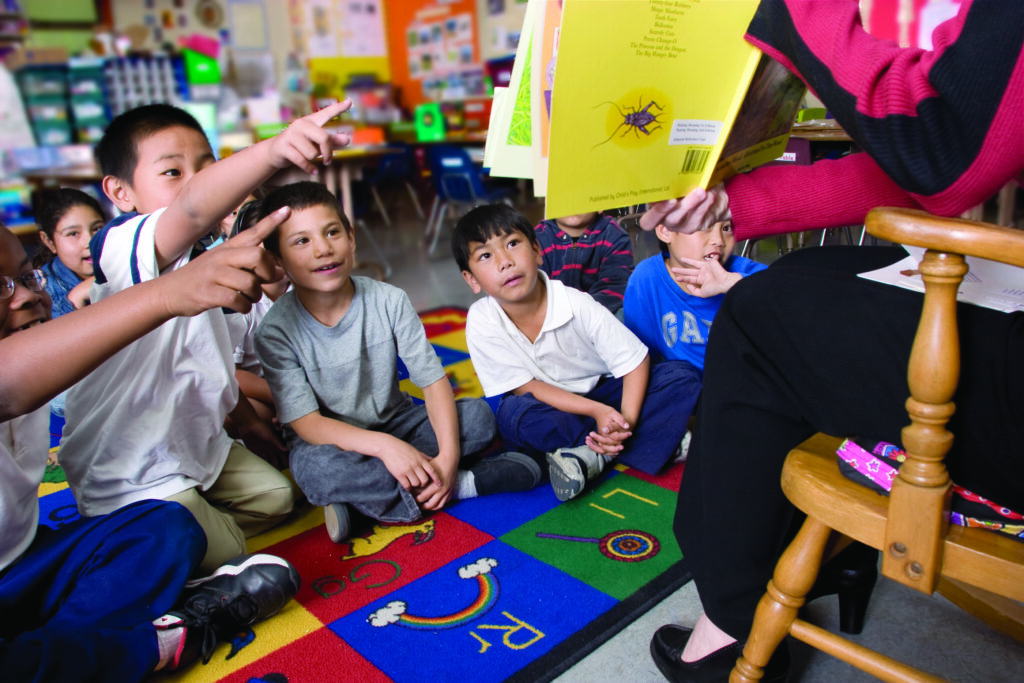
In this interview, Kari Hamelinck, principal at Lincoln School in the Newark Central School District of New York, shares how Collaborative Literacy and SIPPS scaffold her teachers and empower students to own their learning.
“The curriculum is designed in a way that is scaffolded just right for teachers. When you really go through a lesson, you can see the strategic alignment within it… Collaborative Classroom materials have allowed us to focus on how we teach and facilitate in a way that empowers our students to own more of the learning”
Tell us a little about yourself, Newark Central School District, and the students that you serve.
I have been serving the Newark Central School District for 22 years, entering year 23.
Newark is located between Syracuse and Rochester along the Erie Canal in New York. We have a fairly diverse population. Currently 56% of our students are economically disadvantaged; this has significantly increased since I began here in Newark.
Newark Central School District has been a school of improvement, working to improve reading and math skills. I share that because, with that, we have really delved into our instructional practices and are making gains and were able to do so even through the pandemic.
What is the most rewarding part of being an educator for you?
It’s our students! Seeing our students have successes is the takeaway that keeps me going.
I have been blessed to be able to work UPK–12 in this district, and I have seen many of our students grow over the years—some of them were my UPK students, my 3rd graders, and then I worked with them at the middle and high school levels.
The opportunity to see our students grow and instill skills that will carry them through life—that is my purpose.
The opportunity to see our students grow and instill skills that will carry them through life—that is my purpose.
How long has Newark been implementing Collaborative Literacy and SIPPS®? Tell us a little about the implementation.
In 2016–2017 we adopted Collaborative Literacy and SIPPS. With any curriculum that is adopted, engaging in understanding the why within the program makes a difference between teaching from a resource and intentionally teaching.
As a district we did a lot of work with consultants; we valued the lesson study model (collaborating to plan a lesson, observing student interactions and responses to a lesson, and debriefing the lesson). We have continued that model beyond the work with our literacy consultants and currently use this model for math and ELA.
Taking time to dig into the resources and understand the intentionality in the writing has helped us to utilize the program successfully.
One thing that we know as we continue to work with it, is that it is important to sustain that energy to ensure that we are implementing consistently for our students. Curricula are complex, and every time we revisit, we continue to learn more or refine our own facilitation.
Curricula are complex, and every time we revisit, we continue to learn more or refine our own facilitation.
Share with me some of the successes you have seen in your reading data.
We have seen the skills that our students have gained in reading and talking about text transfer to an increase in our state test results, and we were able to achieve these gains in the midst of a pandemic.
What impact has professional learning in Collaborative Literacy and SIPPS had on your teachers and students?
I have participated in many of the Learning Labs facilitated by Collaborative Classroom, our teachers, and our instructional coaches.
In literacy, we have further developed our teachers’ knowledge of the elements of reading. As a district we now have a much stronger focus on phonemic awareness and phonics.
The clear scope and sequences of these skills assist us when planning for students with Tier 2 and Tier 3 needs. We are able to reference the scope and sequences along with our grade level standards to target goals that will move our students forward.
The SIPPS intervention program offers such an extension of the routines that are in the Being a Reader™ sets that it helps us to reinforce the skills for which students need extra practice.
The multi-sensory aspects of SIPPS have also served as a support for students across all tiers.

What thoughts or insights would you share with a district that is considering Collaborative Literacy and SIPPS?
Collaborative Classroom has been a great fit for us. The curriculum is designed in a way that is scaffolded just right for teachers.
When you really go through a lesson, you can see the strategic alignment within it.
While teaching a whole-group Being a Reader lesson, you will see checks for understanding about the text that work up Bloom’s Taxonomy. You are checking for the prerequisite knowledge to get to the higher-level questions, and those questions are strategically facilitated in a way to have students talking with one another about their learning.
In small-group lessons, phonemic awareness skills, phonics, and guided spelling are all aligned to the controlled text in Sets 1–5. Prior to implementing Collaborative Classroom programs, we used to spend hours trying to find the right text to teach each skill and were never this well aligned in our practices.
Collaborative Classroom was the right next step for our district. The curriculum provided a scaffold for our teachers to be able to focus less on picking the right text to teach this, this, and that. Instead Collaborative Classroom materials have allowed us to focus on how we teach and facilitate in a way that empowers our students to own more of the learning.
***
Hear from other New York educators:
Learn more about SIPPS.
Learn more about Collaborative Literacy.
